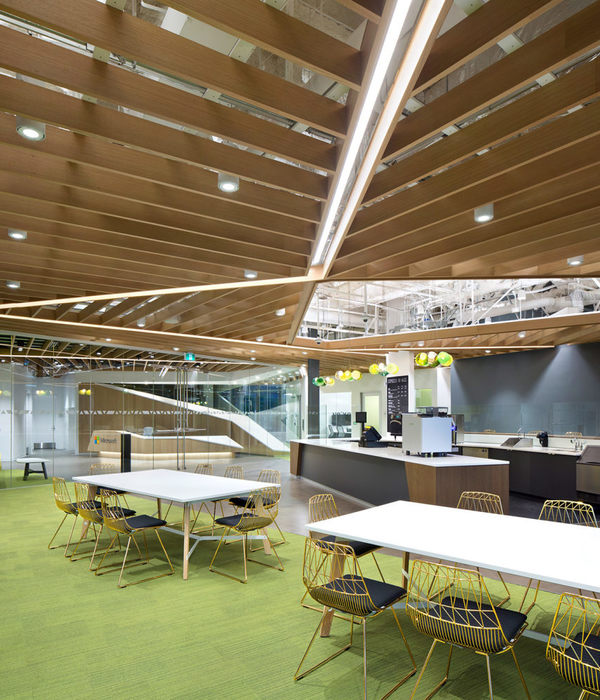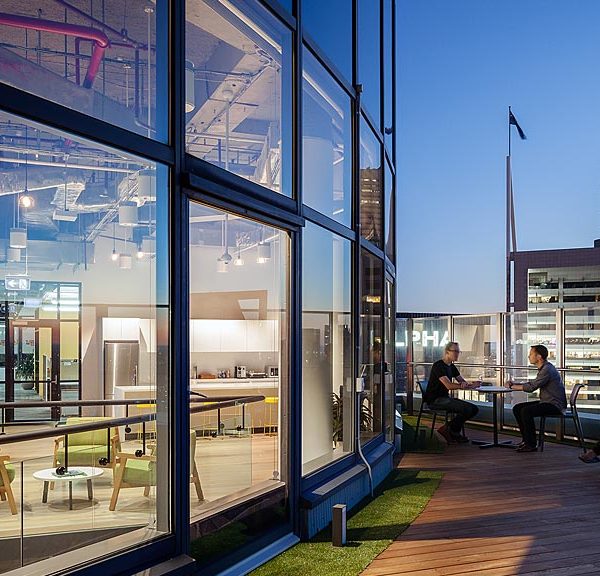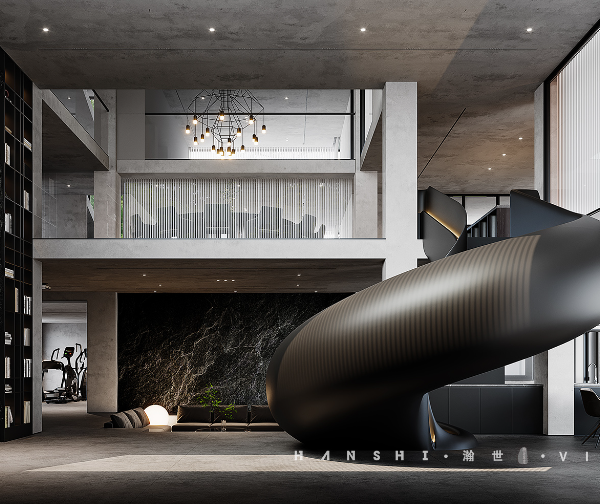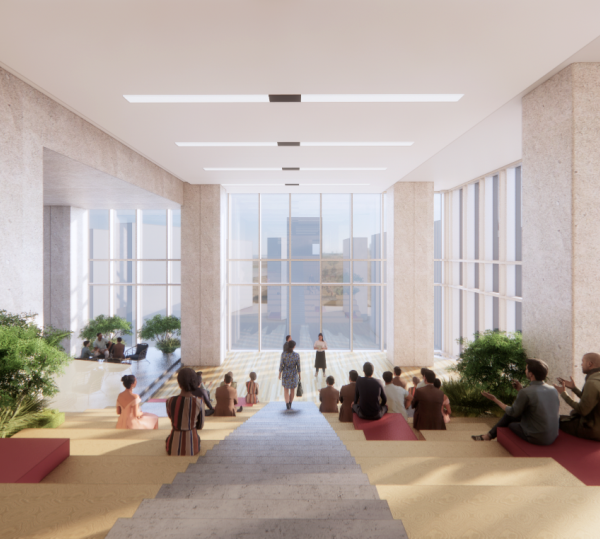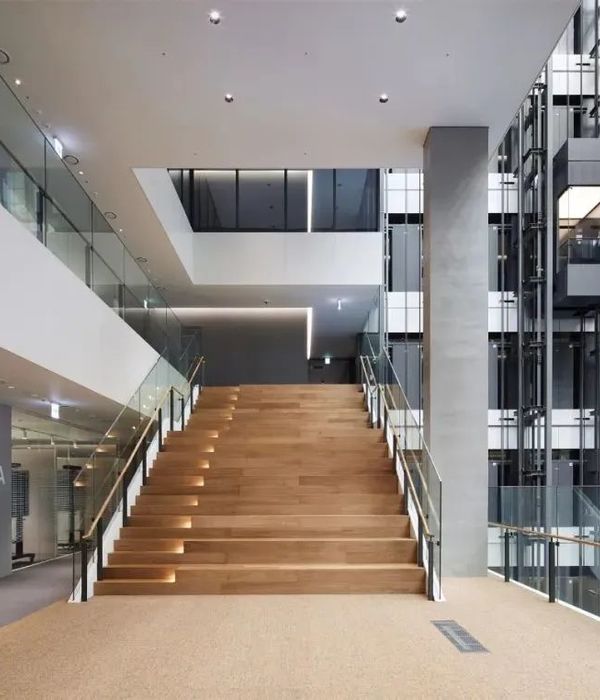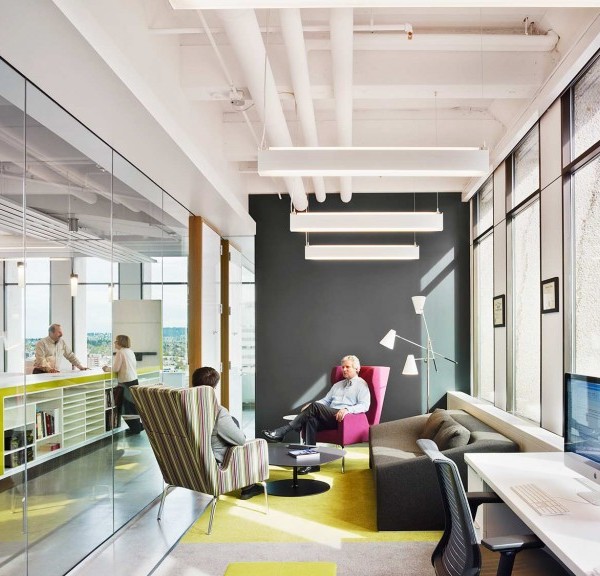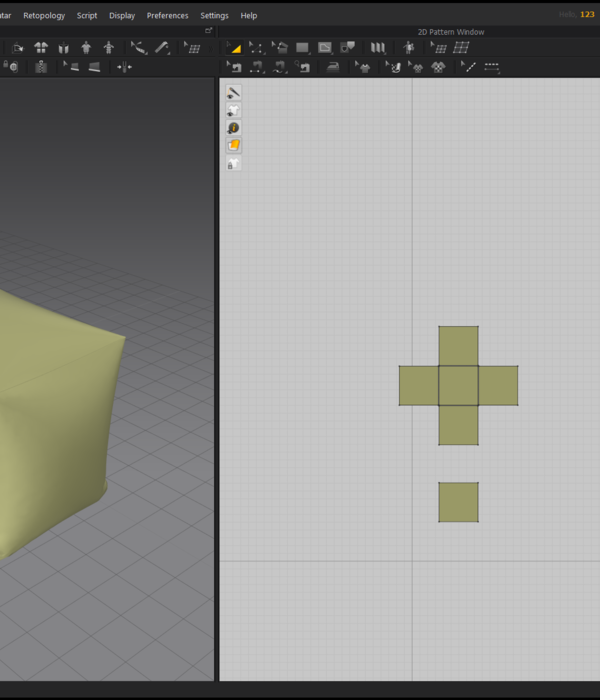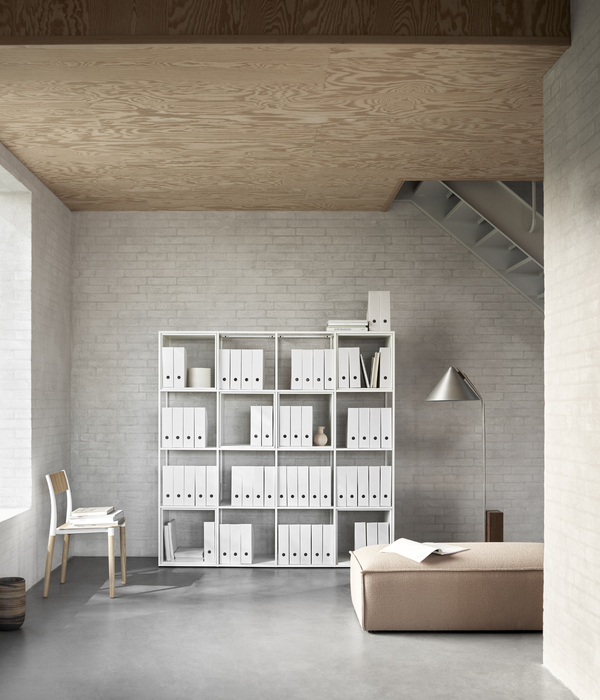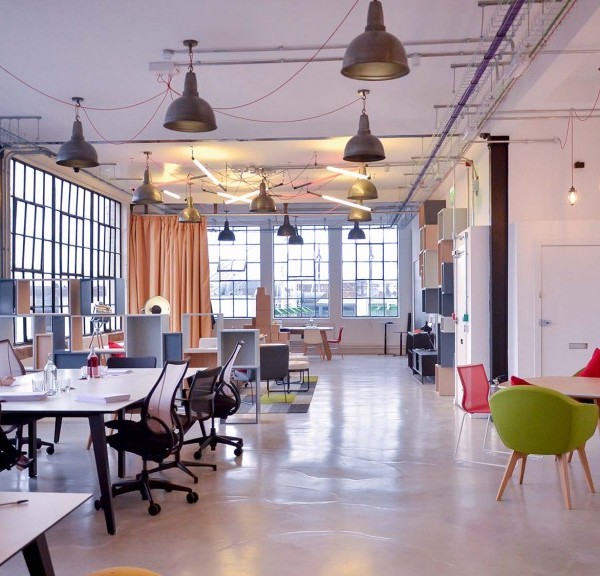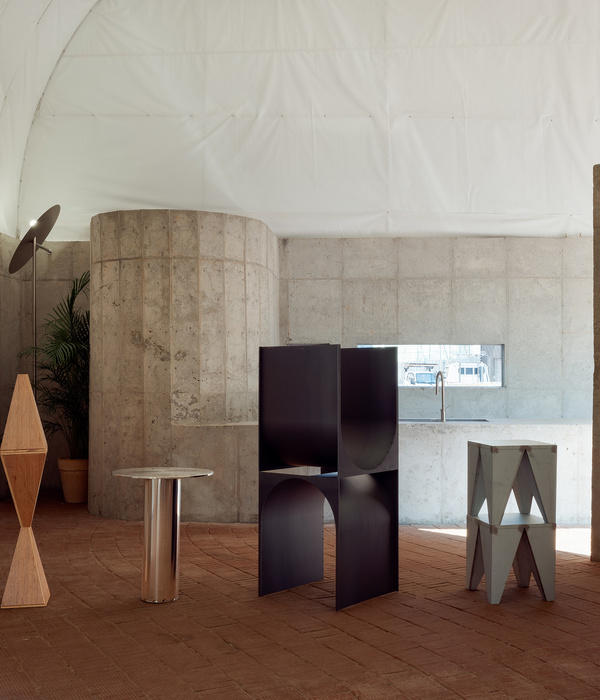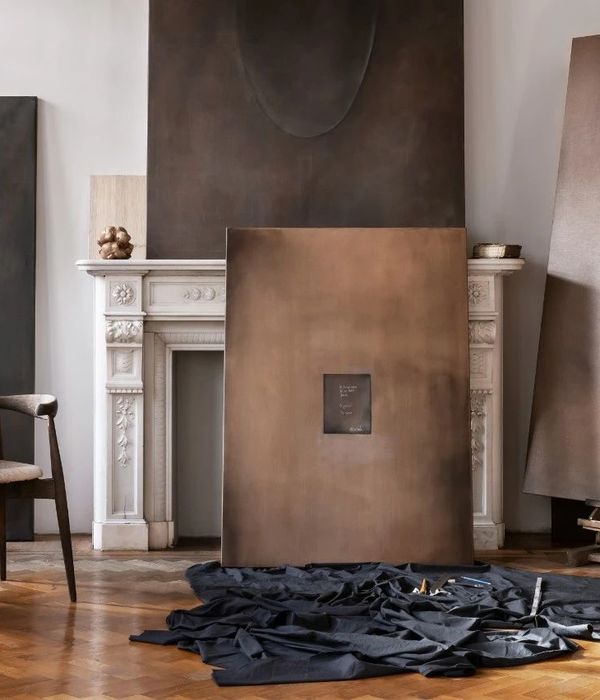Built almost two centuries ago, the Cais da Rocha do Conde de Óbidos is at the center of this riverbank docks which, fortunately, continues to be in permanent activity and transformation. The project consists of the rehabilitation of two old logistic warehouses with very different characteristics. The first one is built in solid brick walls suspending a roof made up of 4 metallic trusses. Inside there is also an iron mezzanine with a wood floor to be refurbished. The second is an ample space with a double-height with a wide vaulted ceiling, built in a structure composed of 6 metallic arches of hyperbolar geometry. The space is divided into a set of 5/6 offices, served by a community cafeteria, meeting room, pantry, and sanitary facilities. The idea is to combine the two very different volumes into a balanced set.
The solution consists of the length extension of the new canopy along the old warehouse brick facade and beyond, crossing the top of the second volume and becoming the new mezzanine of the large vaulted warehouse. The main entrance gains depth and scale in accordance with the logistic origin. The raw treatment of the spaces remains faithful to the warehouse look, presenting the true nature of the materials (structure and other elements), without divergent finishes or ornaments.
The project reminds us that the harbour is still the heart of Lisbon.
Impact The impact on the surroundings is, in conjunction with other interventions nearby, undoubtedly indelible. The harbour administration, in concert with the City Hall, has seen the riverfront as a territory in need of deep rehabilitation in order to maximize its use and significance in the city. For this, it was interpreted that the coexistence of harbour activity with other types of service and office facilities would be important, in a strategically differentiated management along the riverfront. The refurbishment of these warehouses demonstrate this coexistence in a very visible way. It is a clear demonstration that the mix uses, when well thought out, enriches the urban mesh and contributes to their regeneration.
Impact on the city's economic activity. It is well known how this area of the city has taken on a life of its own, expelling the degradation of marginal occupations for many years. The economic impact is evident and has brought about the recovery of public areas.
After the work and with the recent occupation of its new tenants, the difference is quite evident. Even more, when the architectural solution extends the space from the dock to the interior of the vaulted warehouse, contraposing the public road dead end.
Sustainability. The intervention can serve as a successful model for the fact that it reinvented and revived an absolutely decadent structure and as the result was quickly welcomed with success by the real estate market and, more specifically, by the office rental market. Society has gained a new cultural awareness that faces and values the most unlikely rehabilitation works, from a perspective of environmental, ecological, and landscape sustainability.
Intervention. The project proposes, in the first place, the improvement and refurbishment of the building. However, with the option of breaking the public alley end the building gains a new life: the continuity of the dock towards the interior promotes a more evident articulation of the two volumes, the main entrance is valued and the dead end is neutralized.
The commitment to revalue the history of the building through its relationship with the present can be seen in the constructive solutions, in some cases innovative in the project, such as:
All these options contribute to enhancement the pre-existing building and its surroundings.
▼项目更多图片
{{item.text_origin}}

